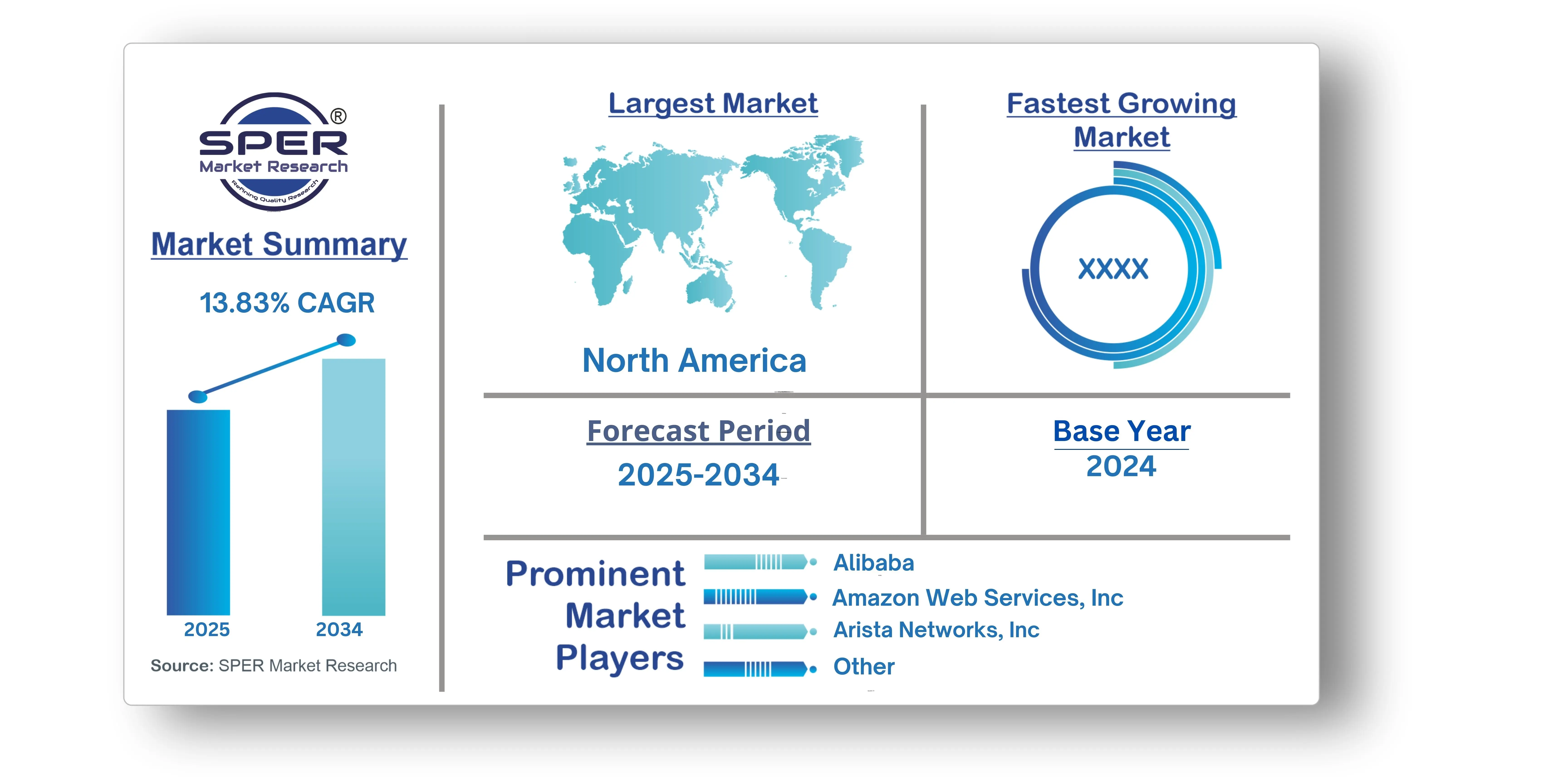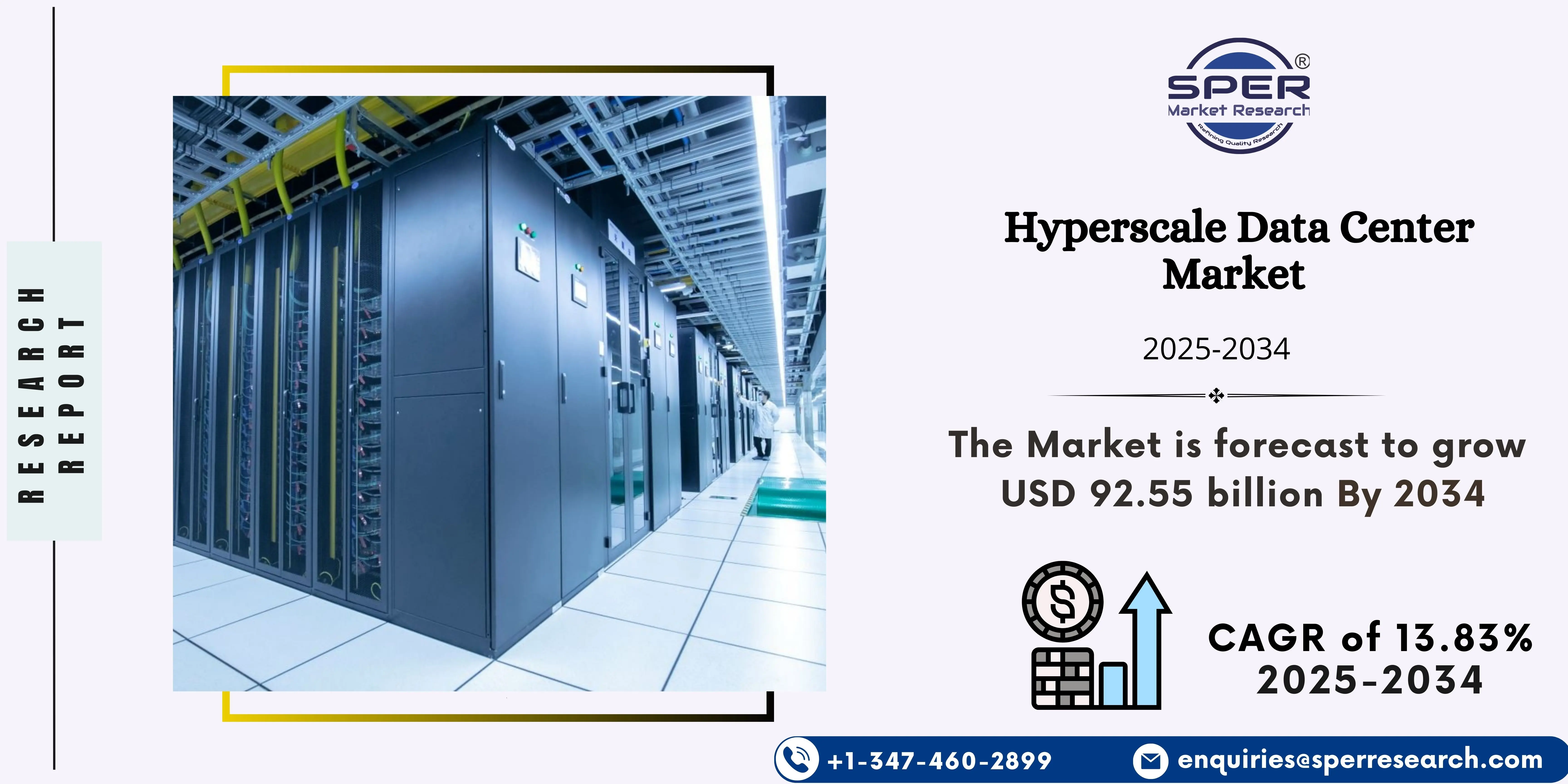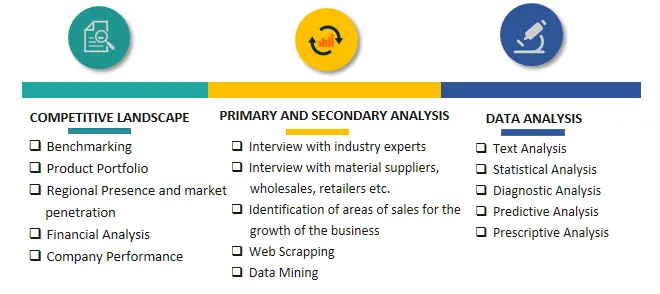
Hyperscale Data Center Market Size, Trends Analysis and Forecast 2034
Hyperscale Data Center Market Growth, Size, Trends Analysis - By Component, By Power Capacity, By Enterprise Size, By End-User - Regional Outlook, Competitive Strategies and Segment Forecast to 2034
| Published: Sep-2025 | Report ID: IACT25161 | Pages: 1 - 246 | Formats*: |
| Category : Information & Communications Technology | |||


- In April 2025, Amazon Web Services (AWS) revealed the introduction of new hyperscale data center campuses in Thailand and Saudi Arabia, thereby enhancing its infrastructure presence in emerging digital economies. These facilities are specifically designed to accommodate high-density AI workloads and are powered entirely by renewable energy, further solidifying AWS’s position as a leader in sustainable hyperscale cloud solutions.
- In March 2025, Microsoft Azure launched its inaugural data center region in Poland, which includes three availability zones and sophisticated cybersecurity frameworks that comply with EU data sovereignty regulations. This development signifies a strategic move into Central Europe, facilitating public sector digitization, enterprise cloud migration, and the deployment of localized AI models.
- In February 2025, Google Cloud (Alphabet) finalized the expansion of its hyperscale campus in Madrid, Spain, which has added new capacity tailored for AI training and edge computing workloads. This expansion incorporates the use of carbon-free energy sources and on-site water recycling systems, underscoring Google’s dedication to sustainability and high-performance computing.
| Report Metric | Details |
| Market size available for years | 2021-2034 |
| Base year considered | 2024 |
| Forecast period | 2025-2034 |
| Segments covered | By Component, By Power Capacity, By Enterprise Size, By End-User |
| Regions covered | North America, Latin America, Asia-Pacific, Europe, and Middle East & Africa |
| Companies Covered | Alibaba, Amazon Web Services, Inc, Arista Networks, Inc, Digital Realty Trust, Equinix, Inc, Ericsson, Inc, Google, Inc, IBM Cloud, Intel Corporation, Microsoft, NTT Ltd, NVIDIA Corporation, Oracle. |
- Global Hyperscale Data Center Market Size (FY’2021-FY’2034)
- Overview of Global Hyperscale Data Center Market
- Segmentation of Global Hyperscale Data Center Market By Component (Hardware, Software, Services)
- Segmentation of Global Hyperscale Data Center Market By Power Capacity (20 MW To 50 MW, 50 MW To 100 MW, 100 MW to 150 MW, 150 MW and above)
- Segmentation of Global Hyperscale Data Center Market By Enterprise Size (Large Enterprises, Small and Medium Enterprises)
- Segmentation of Global Hyperscale Data Center Market By End User (Cloud Service Provider, Technology Provider, Telecom, Healthcare, BFSI, Retail & E-commerce, Entertainment & Media, Energy, Others)
- Statistical Snap of Global Hyperscale Data Center Market
- Expansion Analysis of Global Hyperscale Data Center Market
- Problems and Obstacles in Global Hyperscale Data Center Market
- Competitive Landscape in the Global Hyperscale Data Center Market
- Details on Current Investment in Global Hyperscale Data Center Market
- Competitive Analysis of Global Hyperscale Data Center Market
- Prominent Players in the Global Hyperscale Data Center Market
- SWOT Analysis of Global Hyperscale Data Center Market
- Global Hyperscale Data Center Market Future Outlook and Projections (FY’2025-FY’2034)
- Recommendations from Analyst
- 1.1.Scope of the report
- 1.2.Market segment analysis
- 2.1. Research data source
- 2.1.1. Secondary Data
- 2.1.2. Primary Data
- 2.1.3. SPERs internal database
- 2.1.4. Premium insight from KOLs
- 2.2. Market size estimation
- 2.2.1. Top-down and Bottom-up approach
- 2.3. Data triangulation
- 4.1. Driver, Restraint, Opportunity and Challenges analysis
- 4.1.1. Drivers
- 4.1.2. Restraints
- 4.1.3. Opportunities
- 4.1.4. Challenges
- 5.1. SWOT Analysis
- 5.1.1. Strengths
- 5.1.2. Weaknesses
- 5.1.3. Opportunities
- 5.1.4. Threats
- 5.2. PESTEL Analysis
- 5.2.1. Political Landscape
- 5.2.2. Economic Landscape
- 5.2.3. Social Landscape
- 5.2.4. Technological Landscape
- 5.2.5. Environmental Landscape
- 5.2.6. Legal Landscape
- 5.3. PORTERs Five Forces
- 5.3.1. Bargaining power of suppliers
- 5.3.2. Bargaining power of buyers
- 5.3.3. Threat of Substitute
- 5.3.4. Threat of new entrant
- 5.3.5. Competitive rivalry
- 5.4. Heat Map Analysis
- 6.1. Global Hyperscale Data Center Market Manufacturing Base Distribution, Sales Area, Product Type
- 6.2. Mergers & Acquisitions, Partnerships, Product Launch, and Collaboration in Global Hyperscale Data Center Market
- 7.1. Hardware
- 7.1.1. Servers
- 7.1.2. Enterprise network equipment
- 7.1.3. PDU
- 7.1.4. UPS
- 7.2. Software
- 7.2.1. DCIM
- 7.2.2. Virtualization
- 7.2.3. Others
- 7.3. Services
- 7.3.1. Managed Infrastructure Services
- 7.3.2. Hosting Services
- 7.3.3. Support Services
- 7.3.4. Professional services
- 8.1. 20 MW to 50 MW
- 8.2. 50 MW to 100 MW
- 8.3. 100 MW to 150 MW
- 8.4. 150 MW and above
- 9.1. Large Enterprises
- 9.2. Small and Medium Enterprises (SMEs)
- 10.1. Cloud Service Provider
- 10.2. Technology Provider
- 10.3. Telecom
- 10.4. Healthcare
- 10.5. BFSI
- 10.6. Retail & E-commerce
- 10.7. Entertainment & Media
- 10.8. Energy
- 10.9. Others
- 11.1. Global Hyperscale Data Center Market Size and Market Share
- 12.1. Asia-Pacific
- 12.1.1. Australia
- 12.1.2. China
- 12.1.3. India
- 12.1.4. Japan
- 12.1.5. South Korea
- 12.1.6. Rest of Asia-Pacific
- 12.2. Europe
- 12.2.1. France
- 12.2.2. Germany
- 12.2.3. Italy
- 12.2.4. Spain
- 12.2.5. United Kingdom
- 12.2.6. Rest of Europe
- 12.3. Middle East and Africa
- 12.3.1. Kingdom of Saudi Arabia
- 12.3.2. United Arab Emirates
- 12.3.3. Qatar
- 12.3.4. South Africa
- 12.3.5. Egypt
- 12.3.6. Morocco
- 12.3.7. Nigeria
- 12.3.8. Rest of Middle-East and Africa
- 12.4. North America
- 12.4.1. Canada
- 12.4.2. Mexico
- 12.4.3. United States
- 12.5. Latin America
- 12.5.1. Argentina
- 12.5.2. Brazil
- 12.5.3. Rest of Latin America
- 13.1. Alibaba
- 13.1.1. Company details
- 13.1.2. Financial outlook
- 13.1.3. Product summary
- 13.1.4. Recent developments
- 13.2. Amazon Web Services, Inc
- 13.2.1. Company details
- 13.2.2. Financial outlook
- 13.2.3. Product summary
- 13.2.4. Recent developments
- 13.3. Arista Networks, Inc
- 13.3.1. Company details
- 13.3.2. Financial outlook
- 13.3.3. Product summary
- 13.3.4. Recent developments
- 13.4. Digital Realty Trust
- 13.4.1. Company details
- 13.4.2. Financial outlook
- 13.4.3. Product summary
- 13.4.4. Recent developments
- 13.5. Equinix, Inc
- 13.5.1. Company details
- 13.5.2. Financial outlook
- 13.5.3. Product summary
- 13.5.4. Recent developments
- 13.6. Ericsson, Inc
- 13.6.1. Company details
- 13.6.2. Financial outlook
- 13.6.3. Product summary
- 13.6.4. Recent developments
- 13.7. Google, Inc
- 13.7.1. Company details
- 13.7.2. Financial outlook
- 13.7.3. Product summary
- 13.7.4. Recent developments
- 13.8. IBM Cloud
- 13.8.1. Company details
- 13.8.2. Financial outlook
- 13.8.3. Product summary
- 13.8.4. Recent developments
- 13.9. Intel Corporation
- 13.9.1. Company details
- 13.9.2. Financial outlook
- 13.9.3. Product summary
- 13.9.4. Recent developments
- 13.10. Microsoft
- 13.10.1. Company details
- 13.10.2. Financial outlook
- 13.10.3. Product summary
- 13.10.4. Recent developments
- 13.11. NTT Ltd
- 13.11.1. Company details
- 13.11.2. Financial outlook
- 13.11.3. Product summary
- 13.11.4. Recent developments
- 13.12. NVIDIA Corporation
- 13.12.1. Company details
- 13.12.2. Financial outlook
- 13.12.3. Product summary
- 13.12.4. Recent developments
- 13.13. Oracle
- 13.13.1. Company details
- 13.13.2. Financial outlook
- 13.13.3. Product summary
- 13.13.4. Recent developments
- 13.14. Others
SPER Market Research’s methodology uses great emphasis on primary research to ensure that the market intelligence insights are up to date, reliable and accurate. Primary interviews are done with players involved in each phase of a supply chain to analyze the market forecasting. The secondary research method is used to help you fully understand how the future markets and the spending patterns look likes.
The report is based on in-depth qualitative and quantitative analysis of the Product Market. The quantitative analysis involves the application of various projection and sampling techniques. The qualitative analysis involves primary interviews, surveys, and vendor briefings. The data gathered as a result of these processes are validated through experts opinion. Our research methodology entails an ideal mixture of primary and secondary initiatives.



Frequently Asked Questions About This Report
PLACE AN ORDER
Year End Discount
Sample Report
Pre-Purchase Inquiry
NEED CUSTOMIZATION?
Request CustomizationCALL OR EMAIL US
100% Secure Payment






Related Reports
Our Global Clients
Our data-driven insights have influenced the strategy of 200+ reputed companies across the globe.






















